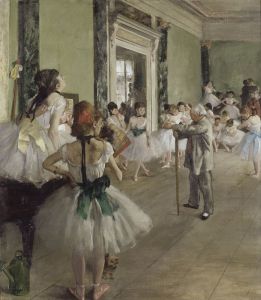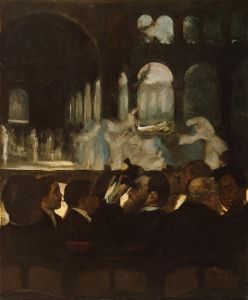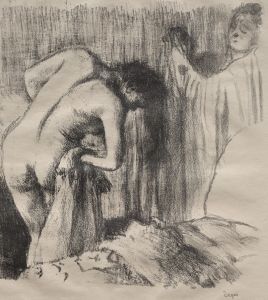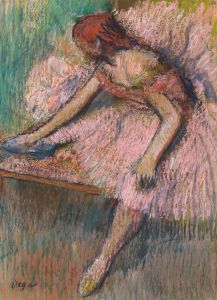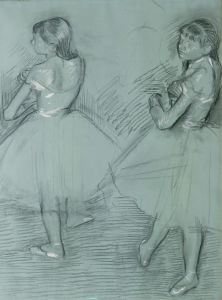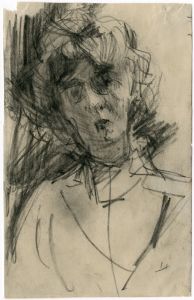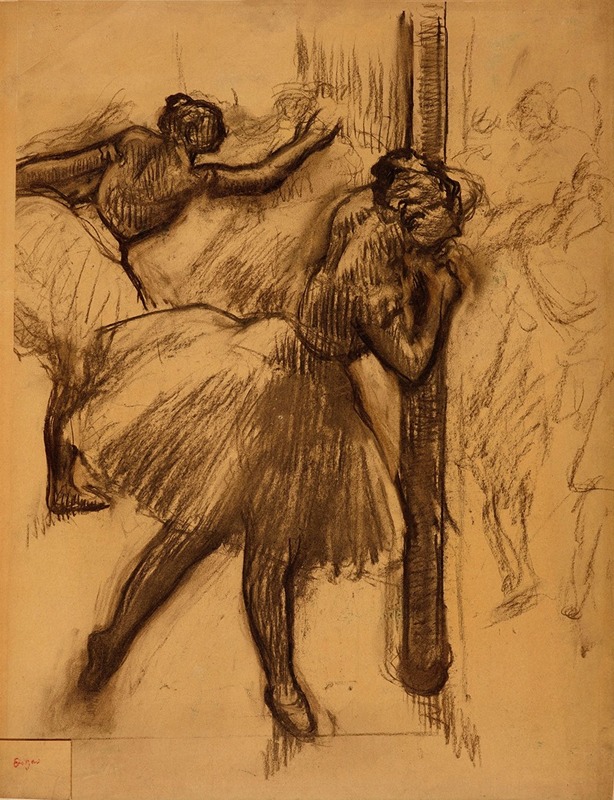
Danseuse, appuyée à une colonne
A hand-painted replica of Edgar Degas’s masterpiece Danseuse, appuyée à une colonne, meticulously crafted by professional artists to capture the true essence of the original. Each piece is created with museum-quality canvas and rare mineral pigments, carefully painted by experienced artists with delicate brushstrokes and rich, layered colors to perfectly recreate the texture of the original artwork. Unlike machine-printed reproductions, this hand-painted version brings the painting to life, infused with the artist’s emotions and skill in every stroke. Whether for personal collection or home decoration, it instantly elevates the artistic atmosphere of any space.
"Danseuse, appuyée à une colonne" is a painting by the renowned French artist Edgar Degas, who is celebrated for his extensive work depicting dancers. Degas, a prominent figure in the Impressionist movement, is known for his innovative compositions and keen observation of movement, which are evident in this particular artwork.
The painting, whose title translates to "Dancer, Leaning on a Column," captures a moment of repose, a common theme in Degas's work, where dancers are often depicted in informal, behind-the-scenes settings rather than in the midst of performance. This approach provides a more intimate glimpse into the world of ballet, highlighting the physical demands and moments of rest that are part of a dancer's life.
Degas's fascination with ballet dancers began in the 1870s and continued throughout his career. His works often explore the tension between the grace and beauty of dance and the rigorous discipline required to achieve it. "Danseuse, appuyée à une colonne" fits within this context, showcasing Degas's interest in capturing the candid, unguarded moments of dancers.
The painting is characterized by Degas's typical use of soft yet dynamic brushwork, which conveys both the delicate texture of the dancer's costume and the solidity of the column against which she leans. The composition is carefully balanced, with the column providing a vertical counterpoint to the dancer's more fluid form. This juxtaposition emphasizes the dancer's momentary pause, a brief respite in the demanding routine of practice and performance.
Degas's palette in this work is subtle yet expressive, utilizing a range of muted tones that highlight the play of light and shadow. This technique not only adds depth to the scene but also enhances the sense of realism that Degas sought to achieve. His attention to detail is evident in the rendering of the dancer's posture and the nuanced expression on her face, which suggests a moment of contemplation or fatigue.
"Danseuse, appuyée à une colonne" reflects Degas's broader artistic goals, which included a desire to capture modern life with authenticity and immediacy. His works often focus on the everyday experiences of individuals, particularly women, in urban settings. Through his depictions of dancers, Degas was able to explore themes of femininity, labor, and the intersection of art and life.
While Degas is often associated with the Impressionist movement, he maintained a distinct approach that set him apart from his contemporaries. He was less concerned with capturing the effects of light and atmosphere, a hallmark of Impressionism, and more focused on the human figure and the dynamics of movement. This emphasis is evident in "Danseuse, appuyée à une colonne," where the dancer's pose and the composition's structure take precedence over the transient effects of light.
The painting is part of Degas's extensive body of work that continues to be celebrated for its innovative approach and profound insight into the human condition. His ability to convey the subtleties of gesture and emotion has left a lasting impact on the art world, influencing generations of artists who followed.
In summary, "Danseuse, appuyée à une colonne" is a testament to Edgar Degas's mastery in capturing the essence of ballet and the nuanced realities of a dancer's life. Through his skillful use of composition, color, and form, Degas offers viewers a glimpse into the private world of dancers, revealing both the beauty and the discipline inherent in their art.









